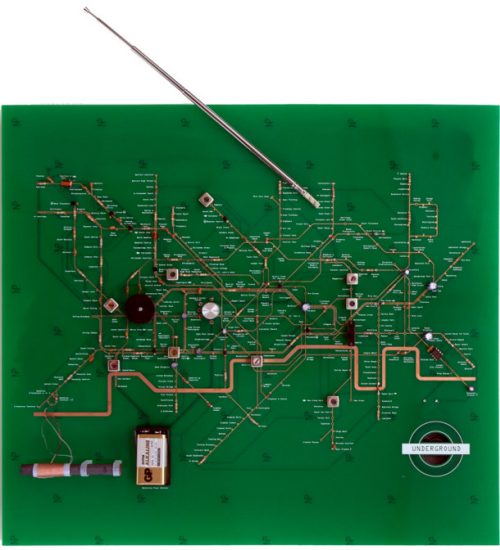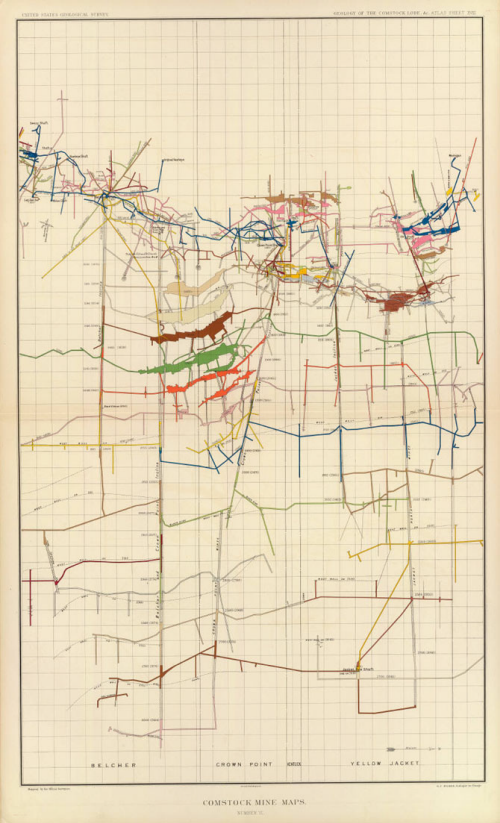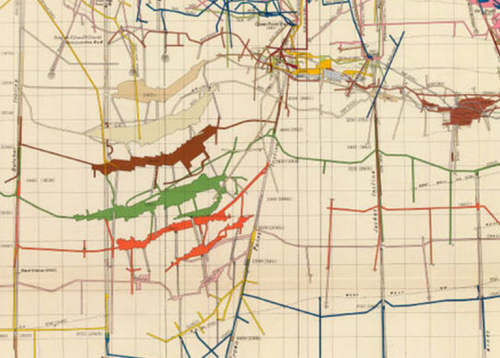There are not many maps that would be included in any list of great examples of design that are based entirely on another map to the extent that they are practicaly copies. This map, we feel, is different. For a start it is based on one of the most iconic maps and a design classic – the Beck tube map of the London Underground railway. So it’s got ‘good bones’ which is a start. But the inclusion of Suzuki’s map here is simply because he has turned a classic into something altogether different.
This map is a radio. Suzuki has built a map in the form of the London Underground map that operates as a transistor radio. The circuit board plots out the map’s lines and various components on the radio such as transistors and dials, form stations and interchanges. The marriage of form and function may at first seem baffling but Harry Beck was an electrical draughtsman and though he was supposed to have based his own map on an electrical circuit this was somewhat of a myth. Suzuki, though, has used this as homage to Beck and created the diagram as an electric circuit. He also builds upon a version of the actual map drawn by Beck some years after the original that was in the style of a real electric circuit…a response to some of the comments he had received about the similarities to an electric diagram.
Suzuki has created a wonderful object. The map is an undeniable classic but building upon the idea of the map as an electric circuit brings is fitting. A great piece of map art…that has form and a function.




